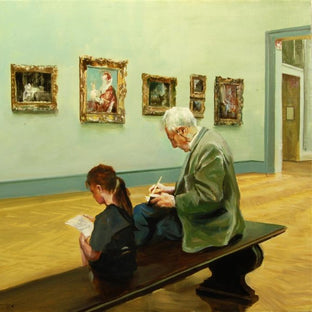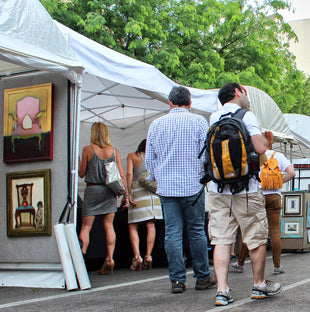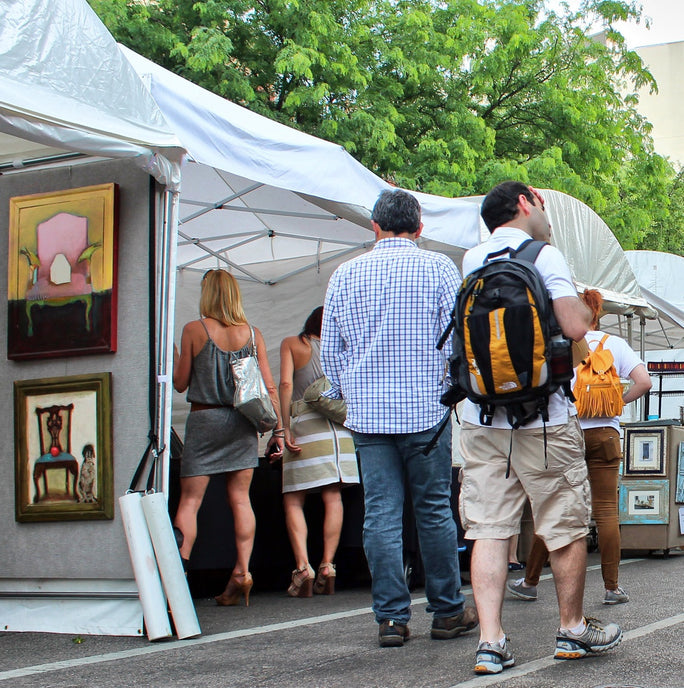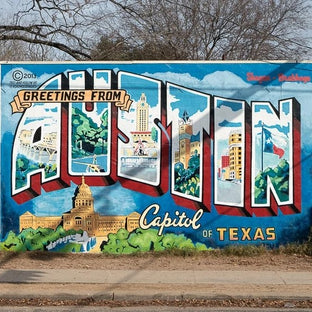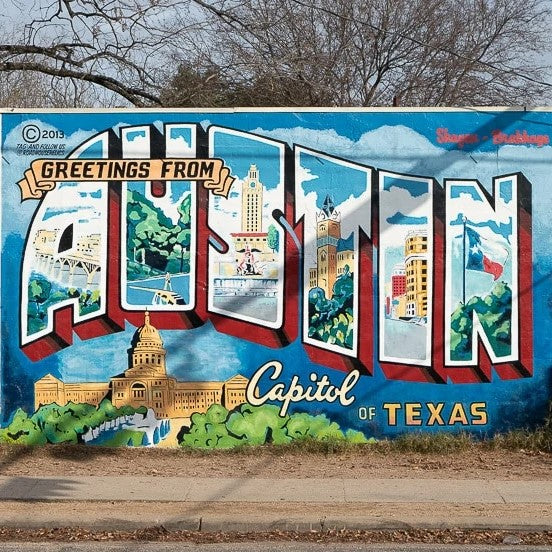Transit Art: A Series on Art that Moves Us
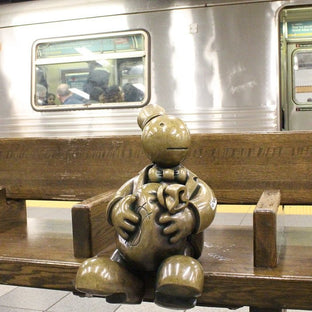
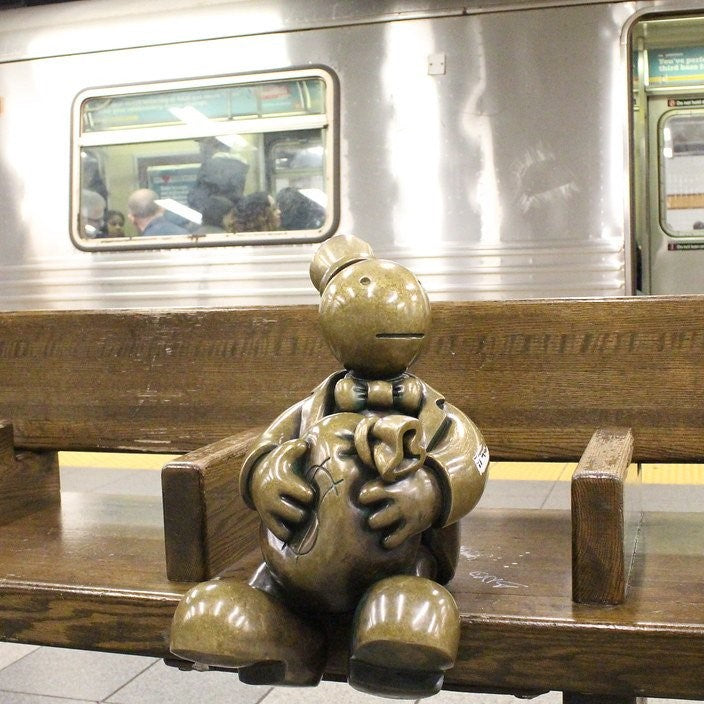

We don't know who came up with the idea that installing beautiful, intriguing, and thought-provoking art as part of transit systems would inject some joy into the otherwise perfunctory activities associated with commuting, but their instincts were correct. Whether it be subway cars, the train line, or your local bus station, these modes of travel are no longer just about efficiency or a way to connect from one destination to the next, but many also offer a unique and inviting visual experience.
As part of our series on public art which includes street art, we're excited to explore this unique way in which art is displayed in public spaces, in the form of transit art. Public art projects have become very commonplace across the transportation landscape for many urban cities including New York, Washington DC, and Philadelphia, just to name a few. This includes works of art that you might see at a train station, subway station, metro stop, or perhaps even on the side of a bus.
Transit art comes in all styles, mediums, shapes, and sizes, from grand scale paintings to bronze sculptures. Not only does transit art hold great appeal for the locals, it also enhances the experience of visitors who either seek it out or may happily discover it along the way.

Transit Art: A Brief Overview
Modern mass transportation is recognized as an efficient and environmentally friendly way to move large numbers of people from place to place, and many cities have developed sophisticated systems by which to do so. A strong transportation system is a critical tool for a community’s economic vitality as well as the health and wellbeing of its residents.
It’s difficult to trace the history of the first examples of art in transit, but creative works have been popping up in communities throughout the country for at least the last century or more. Incorporating art as part of public works projects was initially conceived as a logical and practical way to make the infrastructure more appealing. While it wasn’t always the case, artists are now often included as part of planning teams for transit projects, working alongside architects and engineers. The federal government encourages localities to enhance the mass transportation experience through art, and federal grants frequently support art installations as part of overall transportation project budgets.
Benefits
Transit Art Creates a Sense of Place
Many cities incorporate transit art as a way to identify and highlight those things which are special about their community. The art may reflect cultural elements, significant historic figures and events, and other unique characteristics that instill a sense of community pride.
There are myriad ways in which cities accomplish this, including Albuquerque, New Mexico, home of the International Balloon Fiesta, which wraps its city buses with artfully crafted balloon designs. On the other side of the country, one Harlem subway station features mural panels that honor local African American “heroes and heroines” from throughout the community’s history.
Transit Art Provides Opportunities for Local Artists
Many “art in public places” programs that fund public art projects, do so with a strong intention for utilizing and employing the skills of local artists. These partnerships are a win-win for the community, which is improving its aesthetic while simultaneously providing paid opportunities to artists to apply their creative skills.
For example, a native Napa graffiti artist known as ELLE recently returned to her hometown to apply her creative skills as part of a local transit project. Her artwork depicts two women within a background of colorful Mexican textiles as spray-painted on the exterior of a Napa Valley train car. ELLE has gained recent recognition as an esteemed female graffiti artist and was invited by the local Rail Art District to share her talents, with a nod to her Napa/Sonoma roots.
Transit Art Creates Inviting Spaces
This one is a no-brainer. Art enhances our experience of the world. Whether it’s the daily commuter who rides the same subway line five days a week on their way to work or the international tourist who seeks out one-of-a-kind art in out-of-the-ordinary places.
Where to Find It
Art Underground: Subway Stations
Well over a dozen US cities have subway systems that boast strong ridership numbers. For instance, although the numbers fluctuate, according to the Metropolitan Transportation Authority, on average over one billion people utilize the New York City subway system annually. To make the commute more interesting, subway station art has become a widespread and welcome phenomenon.
Train Stations
Ornately fashioned train stations make us think of the gilded age of train travel when affluent first-class travelers decked out in elegant attire booked luxury train cars to journey across the country. Consistent with this perception, many iconic train stations are known for their spectacular architecture, often complemented by the presence of majestic statues and brilliant natural light streaming through grand hallways.
Though many modern train stations may reflect a different aesthetic, there is still a trend toward the development of interesting architecture and creative spaces, which is one of many reasons train stations are high on our list of places to see great public art.
Bus Stations and Bus Stops
When you think of places to witness great art, bus stations might not be the first venues that come to mind. However, we’ve learned that numerous bus stops and stations throughout the country feature art installations that range from awe-inspiring to mind-blowing.
Ventura, California for example, has a transfer station at the Pacific Mall that features an art installation that is remarkable in scale and imagination. The 36-foot sculpture is a steel impression of a bus that curves and winds in a vertical trajectory and eventually morphs into the shape of a house. Of the project, artist Dennis Oppenheim described his design to the Los Angeles Times as one which “aggrandizes the simple act of waiting for a bus to nearly the level of hallucination.”
Transit Vehicles
While not as common, some cities have transformed their buses into mobile works of art. This is often in the form of bus wraps, or within and upon the interior walls of a subway train.
We’re particularly loving this bus art in Miami by artist Nathan Delinois, which in addition to its inspired design, was Miami’s way of honoring the Haitian community during Haitian Heritage Month in 2017. With a nod to prominent cultural influences, the bus represents another example of transit art that creates a sense of place and hometown pride.
Whether its subways in Manhattan, buses in Brooklyn, or trains in the city of Dallas, transit art is a fascinating example of art in public places. We look forward to sharing more in future articles about some of the best places to see transit art. In the meantime, you can peruse original art with new works posted weekly on our website.
